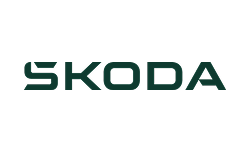
OEM Telematics: Unlocking the Full Potential of Your Fleet
Fleet connectivity is evolving. Berg Insight reports that 75% of all cars sold worldwide in 2023 were equipped with built-in OEM telematics, offering real-time access to vehicle data without the need for additional hardware. But is OEM data enough to manage an entire fleet? While it provides a sustainable, factory-installed solution, its data quality and depth still have limitations.
At Moove, we see the potential of OEM telematics, but we also recognise its challenges. Not all fleet operations can rely solely on OEM data. In many cases, an aftermarket device is essential for deeper insights, driver identification, and safety programmes. The key is to let the use case and data requirements determine whether OEM telematics alone is sufficient—or if an aftermarket device is needed.
What Is OEM Telematics?
OEM (Original Equipment Manufacturer) telematics refers to factory-installed vehicle connectivity solutions. Instead of relying on external tracking devices, fleet managers can access real-time data directly from the vehicle’s built-in systems. Major manufacturers, including Ford, Mercedes-Benz, and Volvo, equip their vehicles with OEM telematics, providing insights into location, engine diagnostics, battery health (for EVs), fuel efficiency, and driver behaviour.
While OEM telematics offers a seamless and sustainable way to connect vehicles, its data quality and depth vary across manufacturers. Some systems provide basic insights, while others offer more advanced analytics. However, for fleets requiring detailed driver behaviour monitoring, predictive maintenance, or a fleet-wide safety programme, OEM data alone may not be sufficient. In these cases, additional hardware is needed to fill in the gaps.
Balancing OEM and Aftermarket Data for Maximum Efficiency
Because OEM telematics does not always provide the depth of data required, many fleets still rely on third-party telematics solutions with additional hardware. While OEM telematics eliminates the need for external installations and simplifies fleet connectivity, its limitations mean that an aftermarket device is often essential for deeper insights and advanced functionalities.
This is particularly relevant as more fleets transition to electric vehicles (EVs). OEM telematics reduces electronic waste and installation costs by removing the need for extra hardware. However, for fleets that require more precise tracking, safety features, or driver identification, an aftermarket device provides higher-quality data and more advanced analytics.
For basic operational needs, OEM telematics provides a cost-effective, low-maintenance solution:
- It offers insights into fuel usage, location tracking, and vehicle health without additional hardware.
- Since it is built-in, there is no installation downtime or extra costs.
- It provides a sustainable alternative, reducing the need for additional electronic components.
For fleets requiring higher-quality data and advanced functionalities, an aftermarket device (such as the Geotab GO) is essential:
- It collects more accurate data and provides a wider range of insights than OEM systems.
- It enables detailed driver identification, such as RFID tags or key fobs, which OEM telematics cannot support.
- It allows for real-time risk monitoring and advanced safety programmes, including in-cab coaching and compliance tracking.
- It ensures predictive maintenance and deeper vehicle diagnostics, offering insights that OEM data often lacks.
By using both OEM and aftermarket data, fleet managers can customise their telematics setup based on their specific needs, ensuring the right level of data for every vehicle in the fleet.
How Moove Integrates OEM and Aftermarket Data
At Moove, we believe in flexibility and data-driven decision-making. Instead of choosing between OEM telematics or aftermarket devices, we integrate both into a single fleet management platform. This allows businesses to manage all their vehicle data—regardless of source—within one system.
OEM telematics works well for basic insights, such as location tracking and fuel consumption, while aftermarket devices provide deeper analytics, driver identification, and advanced safety monitoring. With Moove, fleet managers get a unified view of their entire fleet, ensuring they can optimise performance, reduce costs, and enhance safety, without switching between multiple platforms.
The Future of Fleet Data: A Combined Approach
OEM telematics is evolving, and we expect significant advancements in the coming years. However, aftermarket devices remain crucial for fleets that need higher-quality data, predictive insights, and real-time driver monitoring. Since most fleets operate a mix of vehicle brands and models, the smartest approach is integration, not exclusion.
Moove ensures that regardless of whether data comes from OEM telematics or an aftermarket device, it is centralised into one powerful platform. The focus isn’t just on collecting data but on turning it into actionable insights that drive efficiency, cost savings, and safety improvements.
Ready to optimise your fleet with the best of both worlds? Let’s talk.


























